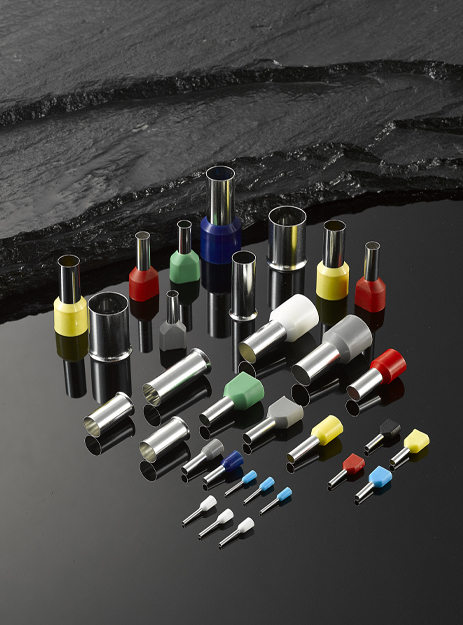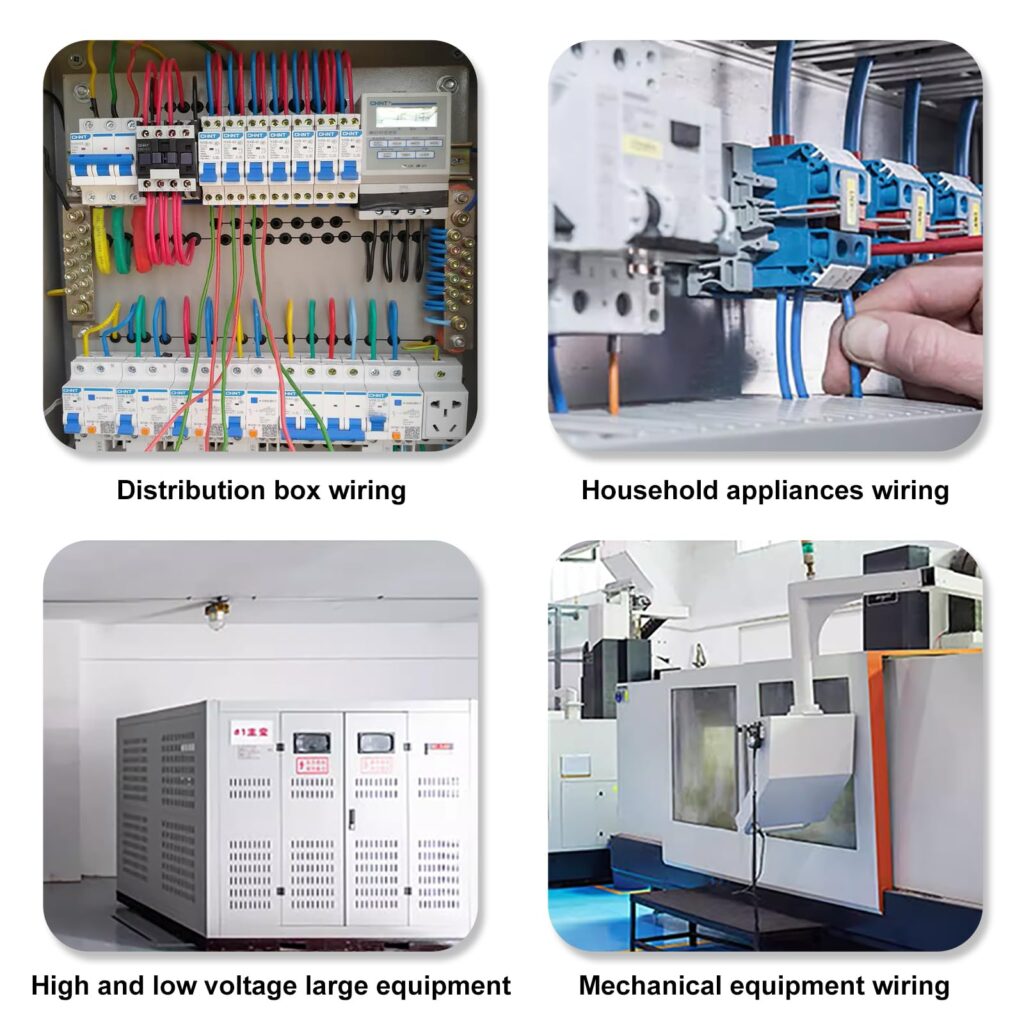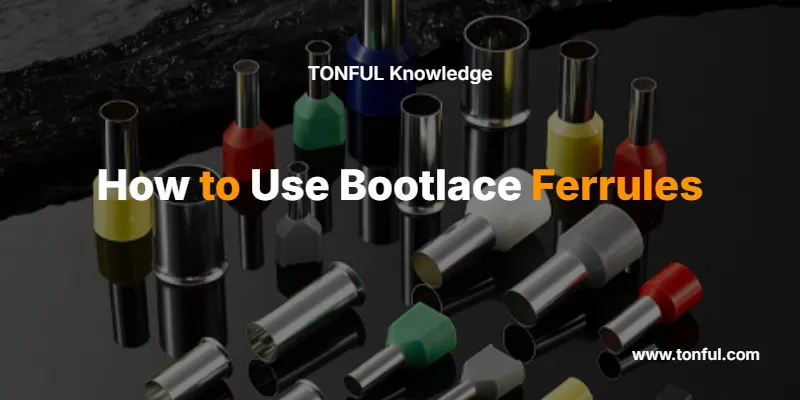Bootlace ferrules are small metal or plastic caps that attach to the ends of shoelaces to prevent fraying and make threading easier. You use bootlace ferrules by cutting your lace to the desired length, sliding the ferrule over the cut end, and crimping it securely in place using pliers or a specialized crimping tool.
Installing bootlace ferrules properly extends the life of your shoelaces by up to 300% and prevents the frustrating problem of frayed ends that won’t fit through eyelets. This comprehensive guide covers everything you need to know about selecting, installing, and maintaining bootlace ferrules for optimal performance.
What Are Bootlace Ferrules?

Bootlace ferrules, also called shoelace aglets or lace tips, are protective caps designed to reinforce the ends of shoelaces and bootlaces. These small cylindrical tubes prevent the lace material from unraveling while providing a smooth, tapered end that easily passes through shoe eyelets.
Key Functions:
- Prevent fraying and unraveling of lace ends
- Create smooth threading surface for easy eyelet passage
- Extend overall shoelace lifespan significantly
- Maintain professional appearance of footwear
- Reduce replacement costs for specialty laces
Types of Bootlace Ferrules: Complete Comparison
| Ferrule Type | Material | Durability | Best For | Price Range | Installation Method |
|---|---|---|---|---|---|
| Metal Brass | Brass alloy | Excellent (5+ years) | Work boots, hiking boots | $0.15-$0.30 each | Crimping pliers |
| Metal Aluminum | Aluminum | Very Good (3-4 years) | Athletic shoes, casual boots | $0.10-$0.25 each | Crimping pliers |
| Plastic Standard | Nylon/Polyethylene | Good (1-2 years) | Casual shoes, children’s footwear | $0.05-$0.15 each | Heat shrinking or crimping |
| Plastic Heavy-Duty | Reinforced polymer | Very Good (2-3 years) | Outdoor gear, work applications | $0.08-$0.20 each | Crimping pliers |
| Silicone | Medical-grade silicone | Good (1-2 years) | Specialized applications | $0.12-$0.28 each | Slip-on installation |
💡 Expert Tip: Metal ferrules provide superior durability for heavy-use applications, while plastic options offer more color variety and cost-effectiveness for casual use.
Step-by-Step Installation Process
Method 1: Metal Ferrule Installation (Professional Grade)
Required Tools:
- Needle-nose pliers or crimping tool
- Sharp scissors or cutting blade
- Measuring ruler
- Fine-grit sandpaper (optional)
Installation Steps:
- Measure and Cut the Lace
- Determine desired lace length for your shoe
- Mark cutting point with small pencil mark
- Cut cleanly with sharp scissors at 90-degree angle
- Prepare the Lace End
- Ensure cut end is clean and even
- Lightly sand frayed fibers if present
- Remove any loose threads or debris
- Position the Ferrule
- Slide ferrule over lace end approximately 1/4 inch
- Ensure 2-3mm of lace extends beyond ferrule end
- Check alignment is straight and centered
- Crimp the Ferrule
- Hold ferrule firmly with needle-nose pliers
- Apply steady, even pressure to compress ferrule
- Crimp in 2-3 locations around circumference
- Test security by gently pulling on lace
- Final Quality Check
- Verify ferrule is firmly attached
- Ensure smooth exterior finish with no sharp edges
- Test threading through shoe eyelets
⚠️ Safety Warning: Always wear safety glasses when cutting laces or crimping ferrules to prevent eye injury from flying debris.
Method 2: Plastic Ferrule Installation (Heat Shrink Method)
Required Tools:
- Heat gun or hair dryer
- Sharp scissors
- Heat-resistant gloves
Installation Steps:
- Prepare Materials
- Select heat-shrink plastic ferrule 20% larger than lace diameter
- Cut lace to desired length with clean edge
- Position and Heat
- Slide ferrule over lace end with 3mm overlap
- Apply controlled heat using heat gun on low setting
- Rotate ferrule during heating for even shrinkage
- Cool and Test
- Allow ferrule to cool completely before handling
- Test security and threading performance
Applications and Use Cases

Heavy-Duty Work Applications
- Construction boots: Metal brass ferrules for maximum durability
- Safety footwear: Aluminum ferrules meeting OSHA compliance
- Industrial environments: Chemical-resistant polymer ferrules
Athletic and Sports Use
- Running shoes: Lightweight aluminum or plastic ferrules
- Hiking boots: Weather-resistant metal options
- Team uniforms: Color-matched plastic ferrules for aesthetic appeal
Specialty Applications
- Marine environments: Corrosion-resistant stainless steel ferrules
- Medical footwear: Antimicrobial silicone ferrules
- Children’s shoes: Soft plastic ferrules for safety
Selection Criteria: Choosing the Right Ferrule
Key Decision Factors
1. Lace Material Compatibility
- Cotton laces: Standard plastic or aluminum ferrules
- Nylon/synthetic: Metal ferrules for secure grip
- Leather laces: Brass ferrules for traditional appearance
- Paracord: Heavy-duty metal or reinforced plastic
2. Environmental Conditions
- Indoor use: Standard plastic adequate
- Outdoor exposure: UV-resistant materials required
- Wet conditions: Corrosion-resistant metals preferred
- Chemical exposure: Specialized polymer ferrules necessary
3. Usage Frequency
- Daily wear: Invest in metal ferrules for longevity
- Occasional use: Plastic ferrules cost-effective
- High-stress applications: Professional-grade materials essential
Size Selection Chart
| Lace Diameter | Ferrule Internal Diameter | Common Applications |
|---|---|---|
| 2-3mm | 3-4mm | Dress shoes, light sneakers |
| 4-5mm | 5-6mm | Athletic shoes, casual boots |
| 6-7mm | 7-8mm | Work boots, hiking boots |
| 8-10mm | 9-11mm | Heavy-duty work applications |
💡 Expert Tip: Always choose ferrules 1-2mm larger than your lace diameter to ensure proper fit and crimp security.
Common Problems and Solutions
Installation Issues
Problem: Ferrule Won’t Stay Attached
- Cause: Insufficient crimping pressure or wrong size selection
- Solution: Use proper crimping tool with adequate force; verify size compatibility
Problem: Lace Frays During Installation
- Cause: Dull cutting tools or excessive handling
- Solution: Use sharp scissors; minimize lace manipulation during process
Problem: Ferrule Splits During Crimping
- Cause: Over-compression or defective material
- Solution: Apply gradual pressure; inspect ferrules before installation
Performance Issues
Problem: Ferrule Comes Loose During Use
- Cause: Inadequate crimping or size mismatch
- Solution: Re-crimp with proper tool; consider upgrading to metal ferrule
Problem: Difficulty Threading Through Eyelets
- Cause: Oversized ferrule or rough edges
- Solution: Light sanding of ferrule tip; verify size selection
Professional Recommendations
When to Use Professional Installation
- High-value specialty laces (leather, paracord)
- Safety-critical applications (work boots, climbing gear)
- Large quantity installations (team uniforms, corporate footwear)
- Warranty or compliance requirements
DIY vs. Professional Installation
| Factor | DIY Installation | Professional Service |
|---|---|---|
| Cost | $0.05-$0.30 per ferrule | $2-$5 per pair |
| Time | 5-10 minutes per pair | Drop-off service |
| Quality | Good with practice | Consistently excellent |
| Warranty | None | Typically 30-90 days |
| Tools Required | Basic pliers | None |
Quick Reference Guide
Essential Installation Checklist
- ✅ Measure lace length accurately
- ✅ Cut lace cleanly at 90-degree angle
- ✅ Select proper ferrule size and material
- ✅ Position ferrule with 2-3mm lace extension
- ✅ Crimp evenly around circumference
- ✅ Test security before use
- ✅ Verify smooth threading performance
Emergency Field Repair
If a ferrule fails during use:
- Remove damaged ferrule completely
- Trim lace end to remove frayed material
- Temporarily wrap end with electrical tape
- Replace with proper ferrule when tools available
Frequently Asked Questions
How long do bootlace ferrules typically last?
Metal ferrules last 3-5+ years with regular use, while plastic ferrules typically last 1-2 years. Lifespan depends on usage frequency, environmental conditions, and material quality.
Can I reuse a ferrule if I need to shorten my laces?
Metal ferrules can sometimes be carefully removed and reused if they weren’t over-crimped during initial installation. Plastic ferrules are generally single-use items.
What’s the difference between ferrules and the original plastic tips on new laces?
Original lace tips are usually molded plastic that’s permanently attached during manufacturing. Replacement ferrules are designed for field installation and typically offer superior durability.
Are there specific ferrules for different lace materials?
Yes, different lace materials require compatible ferrule types. Cotton and synthetic laces work well with standard ferrules, while leather laces need specialized ferrules with internal gripping surfaces.
How do I know if my ferrule is the right size?
The correct ferrule should slide over the lace end with minimal resistance but not be loose. After crimping, there should be no movement between the lace and ferrule.
Can bootlace ferrules be painted or customized?
Metal ferrules can be painted with appropriate primers and paints. Some manufacturers offer colored ferrules, or you can use nail polish for temporary color changes on plastic ferrules.
What tools do I absolutely need for ferrule installation?
At minimum, you need sharp scissors for cutting and needle-nose pliers for crimping. A ruler for measuring and fine sandpaper for smoothing are helpful but not essential.
Are there any safety considerations when installing ferrules?
Always wear safety glasses when cutting or crimping to prevent eye injury. Ensure work area is well-lit and stable. Use proper tools to avoid hand injury from slipping pliers.
Professional Installation Services Available: For high-value footwear or large quantity installations, consult certified shoe repair professionals who can ensure optimal ferrule selection and installation for your specific needs.

